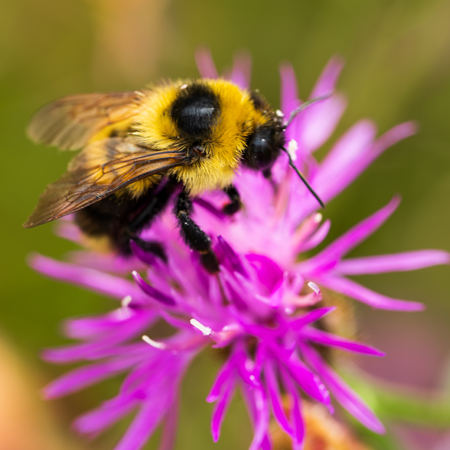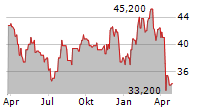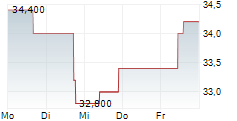NORTHAMPTON, MA / ACCESS Newswire / August 15, 2025 / On a warm spring morning, a native bumblebee hovers over a recently harvested section of a PotlatchDeltic forest, collecting pollen before darting towards a stand of young pine trees. This seemingly small act is part of a much larger story, one where sustainable forestry and pollinator conservation go hand in hand.
Pollinators, such as bees, butterflies, and moths, are essential to the health of forest ecosystems, playing a vital role in the reproduction of many tree species and understory plants. These plants serve as food sources for wildlife species like deer, turkeys, and songbirds, underscoring the role of pollinators in the broader food web.
The interdependence between forests and pollinators extends to agriculture. Proximity to forested areas has been shown to enhance pollination services for nearby crops. For example, plantations of apples, almonds, or coffee can increase their yield by up to 20% with the help of native pollinators from nearby forests or grasslands.
At PotlatchDeltic, sustainability isn't just about timber production, it includes maintaining ecosystems where pollinators can thrive. Forests provide critical habitats for diverse pollinator species, offering sites for reproduction and foraging resources that are often scarce in other areas.
One of the most valuable habitats for pollinators arises naturally in working forests: early successional habitat. After timber is harvested, sunlight is allowed to reach the ground, promoting the growth of diverse flowering plants, grasses, and shrubs that provide essential nectar and pollen resources.
At PotlatchDeltic, we harvest approximately 3% of our timberland annually. This creates a regular supply of timberland with the conditions needed for an early successional habitat, creating opportunities for newly available pollinator foraging grounds to develop. As a result, butterflies, native bees, and other pollinator species benefit from an ongoing cycle of habitat availability, a prime example of how working forests can actively contribute to biodiversity.
PotlatchDeltic has long implemented science-based forestry practices to maintain diverse, thriving habitats for pollinators and other wildlife. These include:
Strategic harvest scheduling: Maintaining a steady supply of early successional habitats across the landscape.
Green-up and adjacency planning: Creating a mosaic of different habitat stages.
Forest edge retention and daylighting roads: Allowing sunlight to reach the forest floor, encouraging the growth of pollinator-friendly plant species.
These management practices are designed to ensure that working forests remain productive, while also serving as havens for biodiversity.
To deepen its commitment to pollinator conservation, PotlatchDeltic works with the Wildlife Conservation Initiative (WCI), supporting essential research on pollinator health. As some pollinator populations continue to decline, understanding species diversity, habitat use, and population trends has become more important than ever. Through WCI's research projects, scientists are gathering data that will provide critical information to implement science-based conservation for at-risk species.
PotlatchDeltic's sustainable forestry management practices help ensure that its working forests remain productive, resilient, and rich in biodiversity for generations to come.
FORWARD-LOOKING STATEMENTS
This release contains certain forward-looking statements within the meaning of the federal securities laws. Words such as "annual," "continue," "ongoing," "regular," and similar expressions are intended to identify such forward-looking statements. Among the forward-looking statements in this release are statements about our forest management practices and their effectiveness, the percentage of our timberland that we harvest annually, and similar matters. These statements reflect management's views of future events based on assumptions and are therefore subject to known and unknown risks, uncertainties, and other factors, and are not guarantees of future conduct, results, or policies. Please view the Cautionary Statement Regarding Forward-Looking Information on page 32 of PotlatchDeltic's 2024 Corporate Responsibility Report.

View additional multimedia and more ESG storytelling from PotlatchDeltic on 3blmedia.com.
Contact Info:
Spokesperson: PotlatchDeltic
Website: https://www.3blmedia.com/profiles/potlatchdeltic
Email: info@3blmedia.com
SOURCE: PotlatchDeltic
View the original press release on ACCESS Newswire:
https://www.accessnewswire.com/newsroom/en/real-estate/potlatchdeltic-on-the-importance-of-pollinators-1061485


